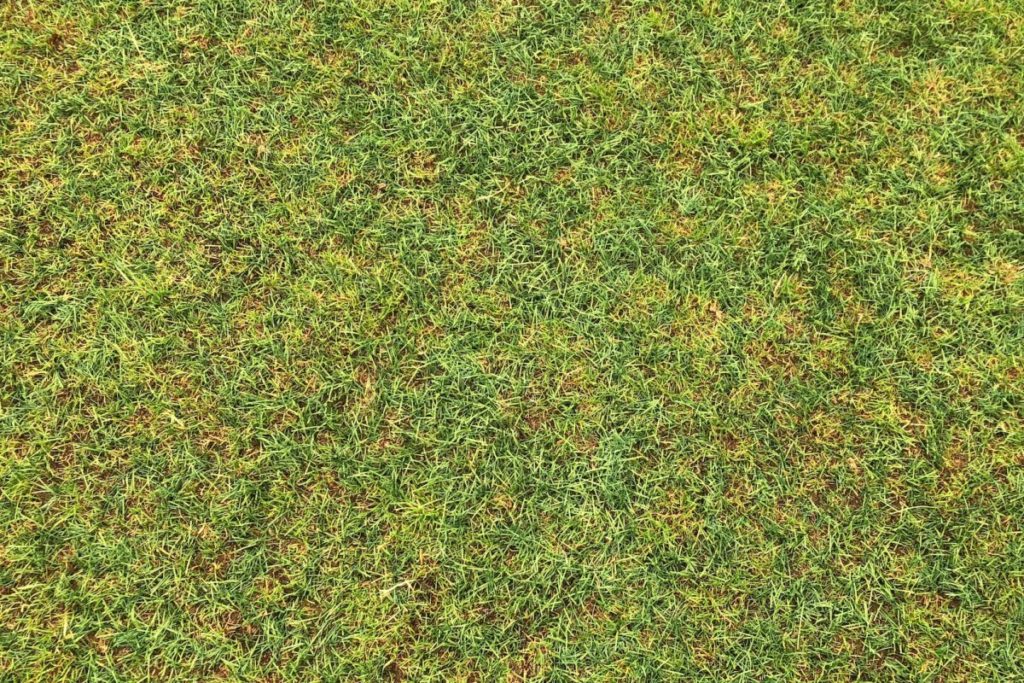If you’re a homeowner, at some point, whether through personal desire or to fall under HOA guidelines for lawn care, you will need to make sure your lawn is healthy, hydrated, and well cared for.
Disclosure: This article may contain affiliate links – that means we may receive a commission if you make a purchase after clicking on these links. This is at no extra cost to you.
If you live in an area with intense heat, it can be hard to keep grass alive, but you dread the idea of having to replant grass. This may lead you to wonder whether dead grass can be revived.
Once grass has died, it cannot be revived, and your lawn will need to be reseeded.
However, on the surface, dormant grass looks like dead grass.
Therefore, it is important to learn how to tell the difference between the two so you don’t replace grass that likely just needs some care to get back to a healthy state.
Take a look at the following to get an idea of how to tell the difference between dormant grass and dead grass, how to properly care for dormant grass so it doesn’t die, and what to do in the event that your grass dies.
Can Dead Grass Be Revived?
Unfortunately, dead grass cannot be revived; however, dormant grass, which looks similar to dead grass, can.
So, before you throw your hands up in frustration and reseed your lawn, first check if the grass is actually dead or just dormant because if the latter, you can bring it back to health.
Both dead grass and dormant grass look brown and have a floppy appearance, so to be able to tell the difference, look for the following signs:
| Dead Grass | Dormant Grass |
| Dead grass tends to happen in patches and has no consistency. Dead grass can be pulled up easily if you tug on it.If you give extra water to dead grass, it will stay brown. | Dormant grass tends to be more uniform, with all of the grass appearing brown/straw colored.*Dormant grass will give a bit of resistance if you tug on it. If you give extra water to dormant grass for a few days, it will turn green and revive. |
*Sometimes, patches of dead grass can occur due to insects, pet urine, or certain plant diseases.
How to Revive and Care for Dormant Grass
If you have tested out your grass with the above steps and have realized that it is simply dormant, you still need to take special care of it as dormant grass is more susceptible to damage.
Take the following steps for several weeks to get your lawn back to full health:
Avoid walking or running on the lawn
This can be tricky but try to keep everyone walking on the sidewalk to and from the car. If you have young children, have them focus on games that will keep them on the sidewalk, such as sidewalk chalk, bikes, or skating.
Don’t over-mow
Grass does not actively grow when it is dormant, and because the grass is not as thick, it leaves the turf more susceptible to damage.
Don’t overwater
This may be a little confusing as one of the ways that you can tell that grass is dormant as opposed to dead is by watering it and seeing it turn green over several weeks. However, once you have realized that, while it is still important to make sure your lawn gets enough water, you don’t want to overdo it. Half an inch every two weeks is enough.
Do not fertilize your lawn
Fertilizing doesn’t wake the grass up, so it ends up just being a waste of fertilizer. Additionally, it may instead cause weeds to start growing, which can choke out your grass or give you more work to do to remove them.
Pull or treat weeds with herbicides directly
Do not layer herbicides over the whole lawn as they can kill the grass.
What To Do If Your Grass Is Dead
You may have some parts of your lawn still alive, but the more likely scenario is that you will need to reseed your lawn.
First, you need to fertilize it. Keep in mind that it is not a regular fertilizer you will need, but a therapeutic, restorative fertilizer such as this one.
Afterward, you can reseed your lawn. There are many options for grass seed, such as discussed here.

Conclusion
Once grass is dead, it cannot be revived. However, if your grass is simply dormant, it can be restored to full greenery.
It is important to distinguish whether your grass is dead or dormant before starting any treatment.
Signs such as turning green again after being watered or a resistance to being pulled up are indications that your grass is dormant.
If your grass is dormant, avoid walking on it, fertilizing it, or overwatering.
If your grass is dead, use a restorative, therapeutic fertilizer and a combination of different types of grass seed to get it started again.
Photo credits: Azizur


